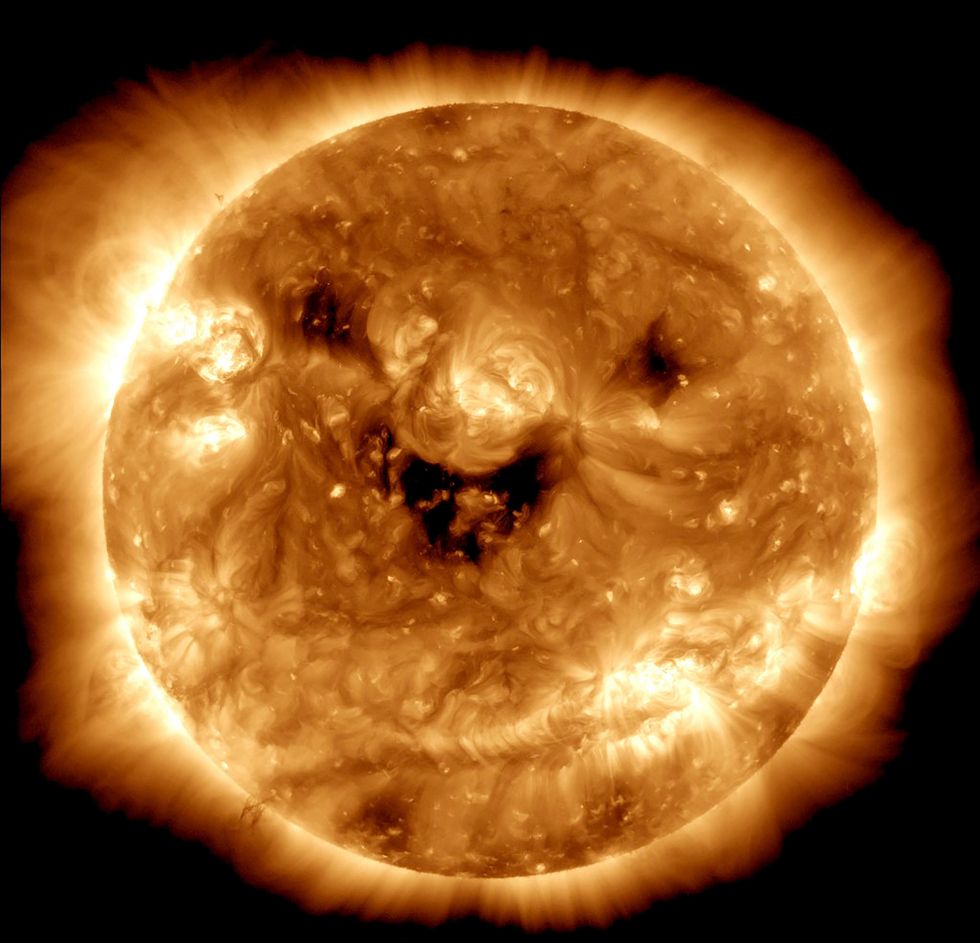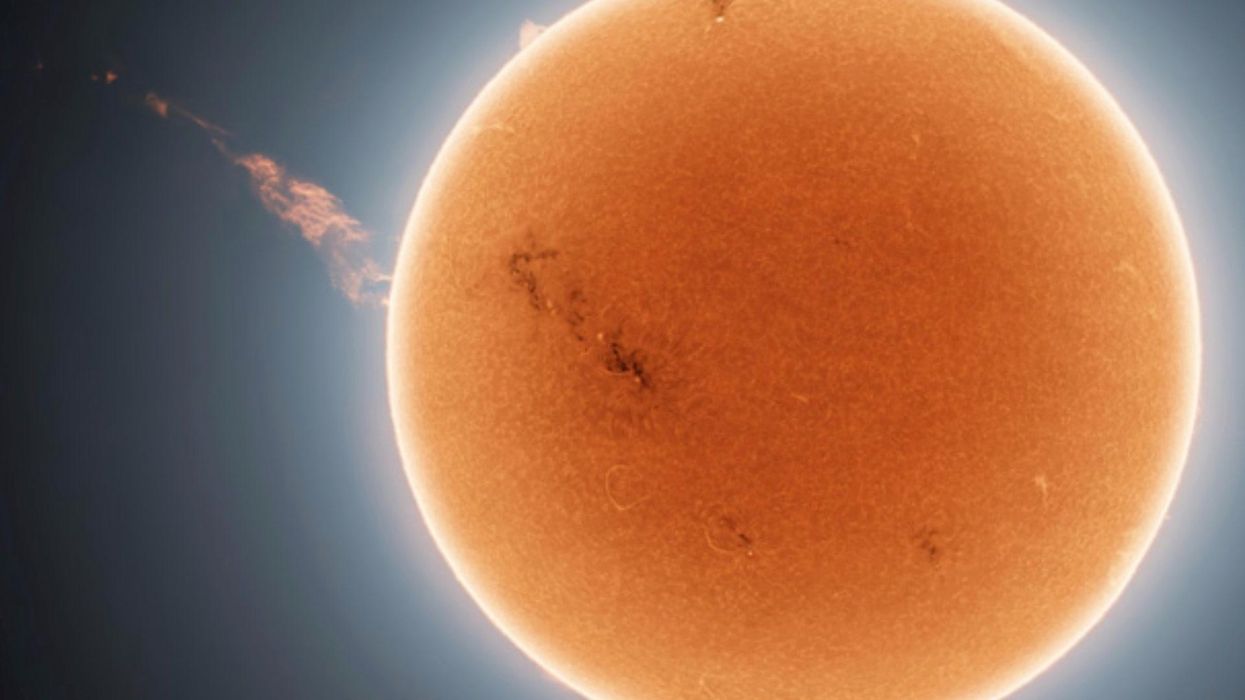Greg Evans
Oct 30, 2022
Astrophotographer Captures Incredible Photo of a Million Mile Long Coronal Mass Ejection …
Amaze Lab
Look, things aren't great on Earth right now.
Politics is in disarray, the war in Ukraine has everyone worried about nuclear war and the world's richest man is sharing conspiracy theories on the website that he owns.
If it makes you feel any better, it would appear that elsewhere in the solar system the ongoings on Earth is creating some sort of happiness.
Incredible images beamed from space currently show the star pulling an uncanny smiley face.
Sign up to our new free Indy100 weekly newsletter
Since Wednesday (26 Oct), forces of solar wind and plasma have conspired to seemingly display two eyes and a cheeky grin.
The phenomenon is continuing today, with NASA reporting: "NASA’s Solar Dynamics Observatory caught the Sun "smiling."
"Seen in ultraviolet light, these dark patches on the Sun are known as coronal holes and are regions where fast solar wind gushes out into space"
The scenes have been captured by the Solar Dynamics Observatory (SDO) spacecraft, which observes the Sun’s dynamics to "increase understanding of the nature and sources of solar variability".

SDO documents the outer atmosphere of the Sun - called the corona - as well as hot flare plasma.
NASA explains: "Hot active regions, solar flares, and coronal mass ejections will appear bright here.
"The dark areas - called coronal holes - are places where very little radiation is emitted, yet are the main source of solar wind particles."
The Solar Dynamics Observatory studies how energy is stored and released in the Sun’s atmosphere, where the Sun’s energy come from, and the interior of the Sun we can better model and forecast “space weather.”
The Sun is the star at the centre of the Solar System; a nearly perfect ball of hot plasma, heated to incandescence by nuclear fusion reactions in its core.
It radiates this energy mainly as light, ultraviolet, and infrared radiation, and is the most important source of energy for life on Earth.
Have your say in our news democracy. Click the upvote icon at the top of the page to help raise this article through the indy100 rankings.
Top 100
The Conversation (0)














